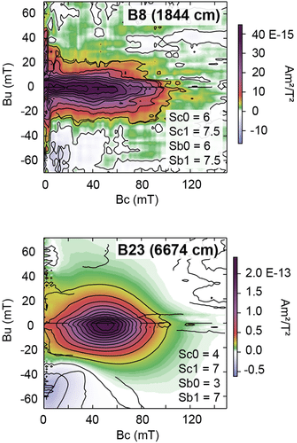Paleoclimatology uses various climate “proxies” from the Earth to provide scientists with a means to reconstruct and help determine climatic conditions prior to the modern day taking of instrumental records. Proxies can be ice cores, pollen, marine sediments, and other physical, biological, or chemical materials. Datasets from these reconstructions tell us much more about how our climate has changed over time.
 In many cases, measuring the magnetic properties of proxy samples aids in this analysis, and VSMs are often used for this purpose. Specifically, scientists use them to characterize the magnetic compositions and grain size distribution of samples while typically employing the first order reversal curve (FORC) measurement for a deeper understanding of magnetic behavior. Such was the case in this recently published paper, which details the work of Earth scientists from Australia and the U.K. studying lake sediments from Darwin Crater in Tasmania. For their multi-proxy analysis, various measurements were performed using magnetometry equipment at the Australian Archaeomagnetism Laboratory, but to obtain magnetic domain state and FORC analysis data for their paleomagnetic samples, they turned to Lake Shore. We subsequently ran measurements on three samples in our 8600 Series VSM, with FORC datasets then processed in FORCinel 3.0 using VARIFORC smoothing, the results of which are presented on page 9 of the paper.
In many cases, measuring the magnetic properties of proxy samples aids in this analysis, and VSMs are often used for this purpose. Specifically, scientists use them to characterize the magnetic compositions and grain size distribution of samples while typically employing the first order reversal curve (FORC) measurement for a deeper understanding of magnetic behavior. Such was the case in this recently published paper, which details the work of Earth scientists from Australia and the U.K. studying lake sediments from Darwin Crater in Tasmania. For their multi-proxy analysis, various measurements were performed using magnetometry equipment at the Australian Archaeomagnetism Laboratory, but to obtain magnetic domain state and FORC analysis data for their paleomagnetic samples, they turned to Lake Shore. We subsequently ran measurements on three samples in our 8600 Series VSM, with FORC datasets then processed in FORCinel 3.0 using VARIFORC smoothing, the results of which are presented on page 9 of the paper.
